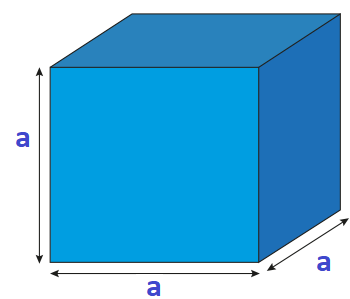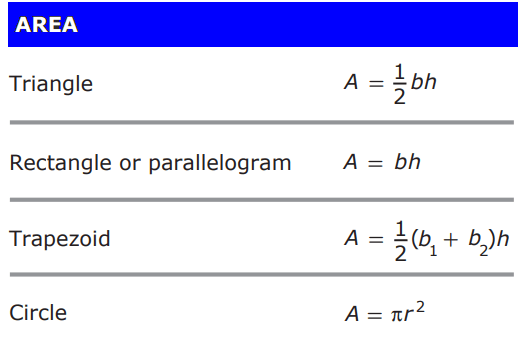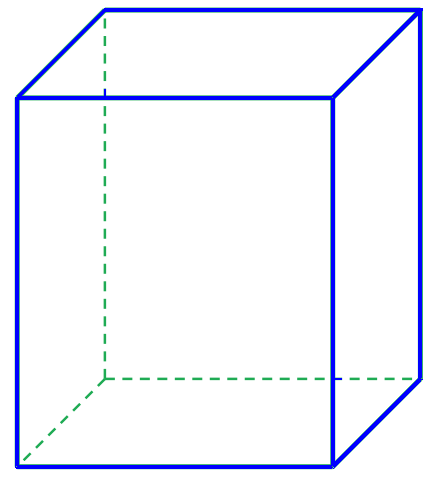Area of parallelograms, trapezoids, and triangles; volume of right rectangular prisms
Polygon. A closed shape made up of at least 3 line segments. Ex. Triangle, Rectangle,…
Polygon. # Sides = # Angles = # Vertices
Regular Polygon. All the sides have the same length in that shape. Ex: Square, Pentagon,
Quadrilateral A polygon (plane figure) with 4 angles and 4 sides; the 4 angles sum 3600
Any four-sided shape is a Quadrilateral
Quadrilateral Family

A trapezoid is a polygon with four sides, two of which (the bases) are parallel to each other.
A parallelogram is a quadrilateral with two pairs of parallel sides.
Kite: two pairs of adjacent sides are of equal length.
Rhombus: all four sides are of equal length.
Rectangle: all four angles are right angles
Square (regular quadrilateral) The Interior Angles of a Quadrilateral add up to 360°
Solids
Solid:. A three-dimensional object. The 3 dimensions are called width, depth, and height.
Cube. A prism with six congruent faces.
Opposite faces are parallel.
6 Faces (each face is a square)
12 Edges
8 Vertices (corner points)

The surface area of a cube is the area of the six squares that cover it. (Surface Area = 6 a²)
Volume of a cube = a³ (Volume=side times side times side).
Volume of a rectangular prism
The formula for finding the volume of a rectangular prism is the following:
Volume=length×width×height
The formula to find the surface area of a rectangular prism is
A = 2wl + 2lh + 2hw,
Essential Questions:
What is volume and how does it relate to the attribute of an individual figure?
Learning Targets:
- Find the area of polygons by composing or decomposing them into basic shapes.
- Apply my understanding of shapes to solve real-world problems.
- Solve real-world and mathematical problems involving area, surface area, and volume.
- Solve real-world and mathematical problems involving area, surface area and volume.
- Explain the volume formula of a rectangular prism using unit cubes.
- Find the volume of a rectangular prism using formulas.
- Solve real-world problems involving volume.
- Represent three-dimensional shapes using nets.
- Find the surface area of three-dimensional shapes (using nets).
- Solve for surface area in real-world problems involving three- dimensional shapes.
Understandings:
- The perimeter is a linear measurement, and the area is not.
- Develop an understanding of circumference and area of a circle.
- Formulas can be used to calculate circumference and area of two-dimensional shapes.
- Pi represents the constant relationship between the circumference and the diameter of all circles.
Vocabulary:
- Circle, Pi, diameter, radius, circumference, area, rectangle, square, parallelogram, trapezoid, triangle, semicircle, quarter circles, composite figure, triangle, angle


